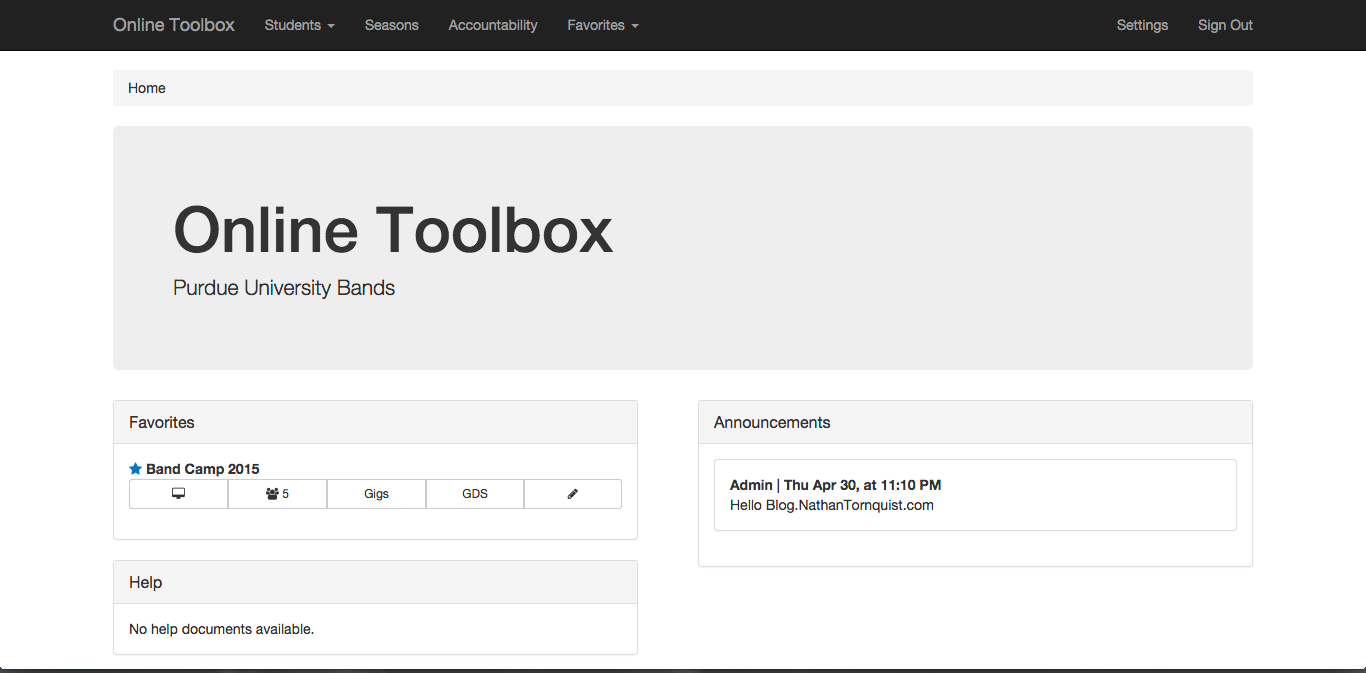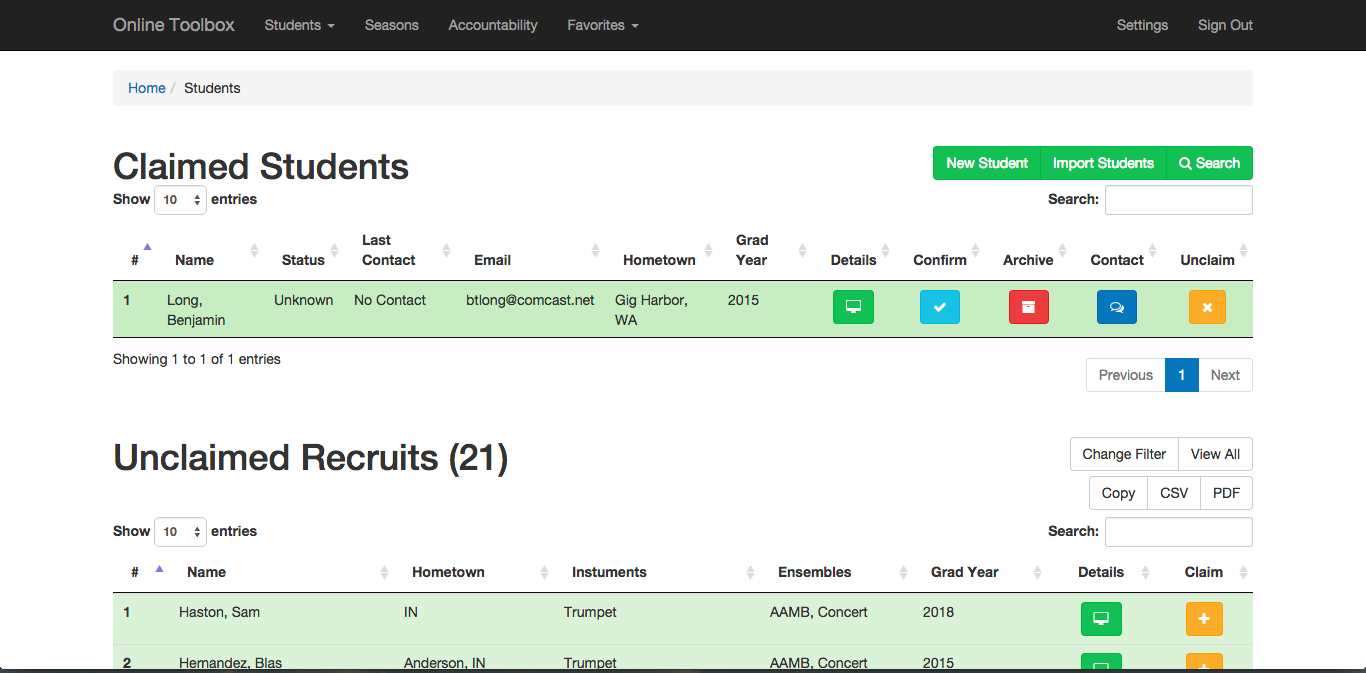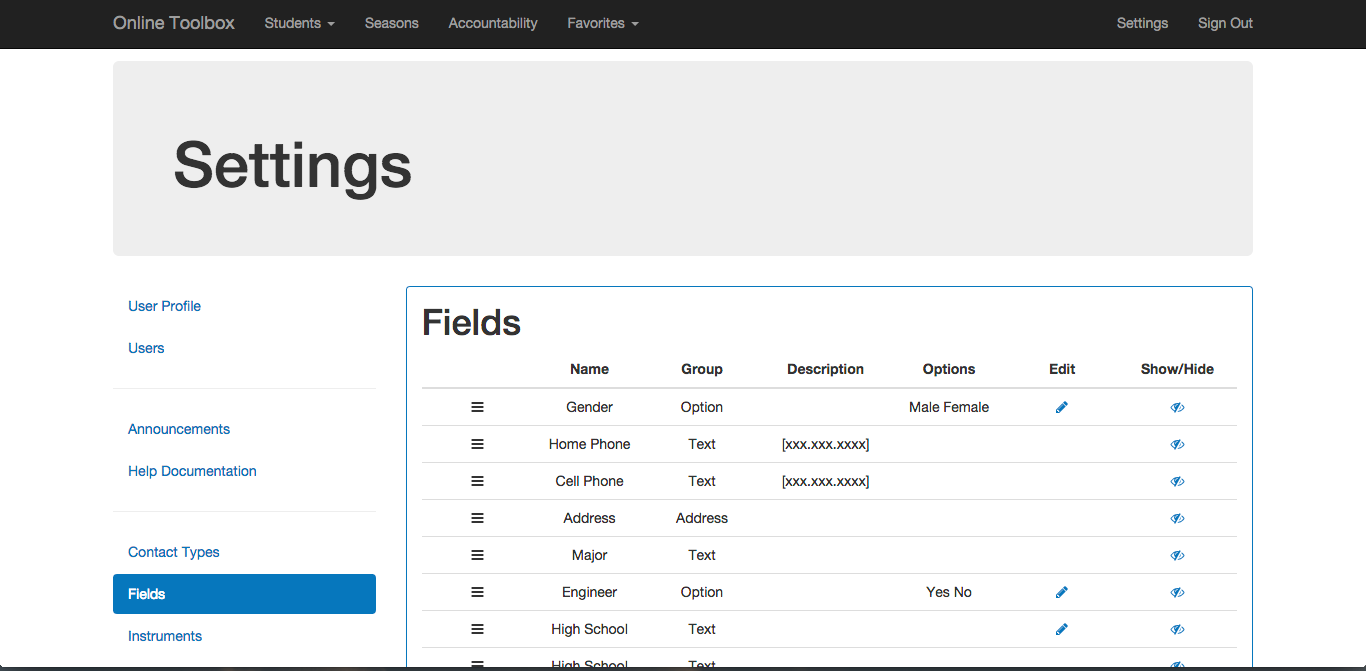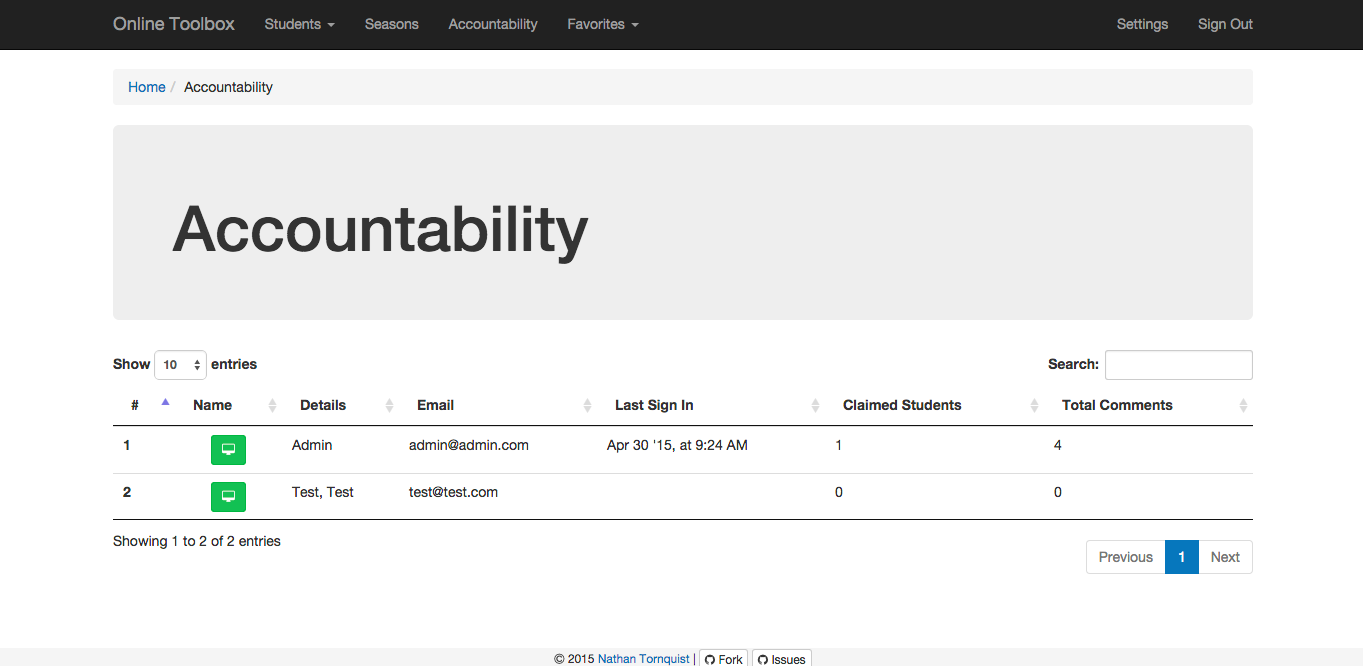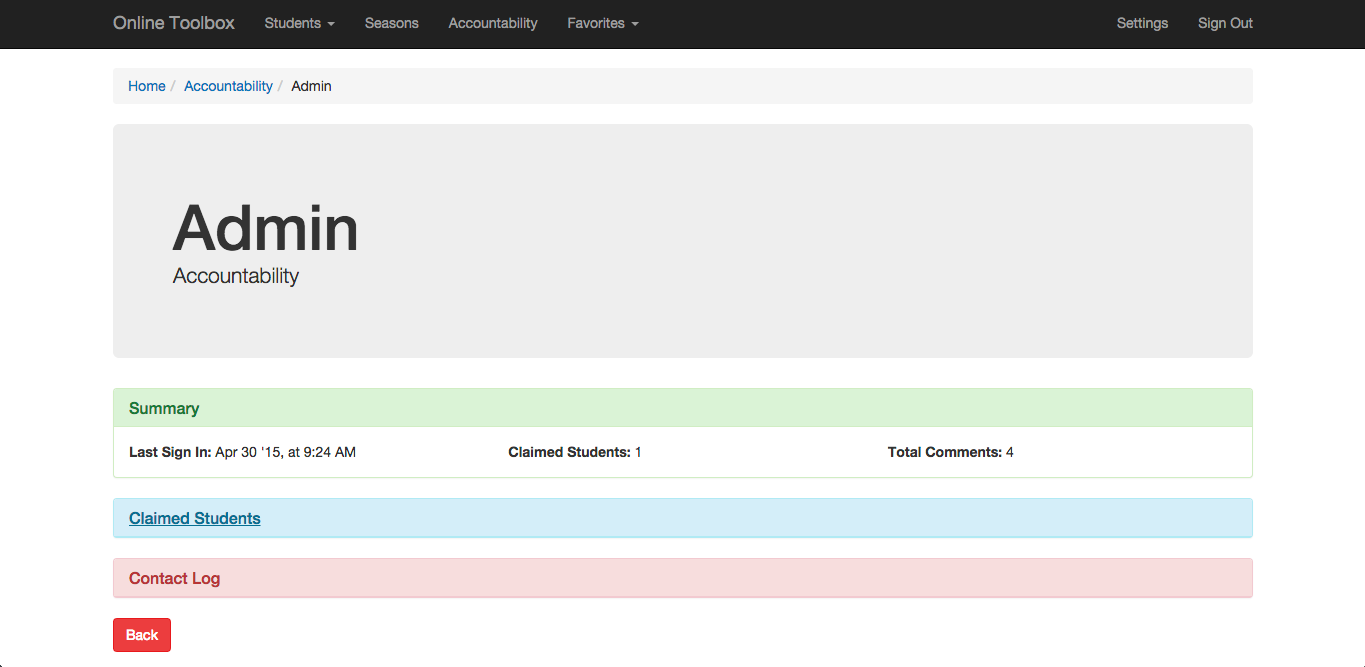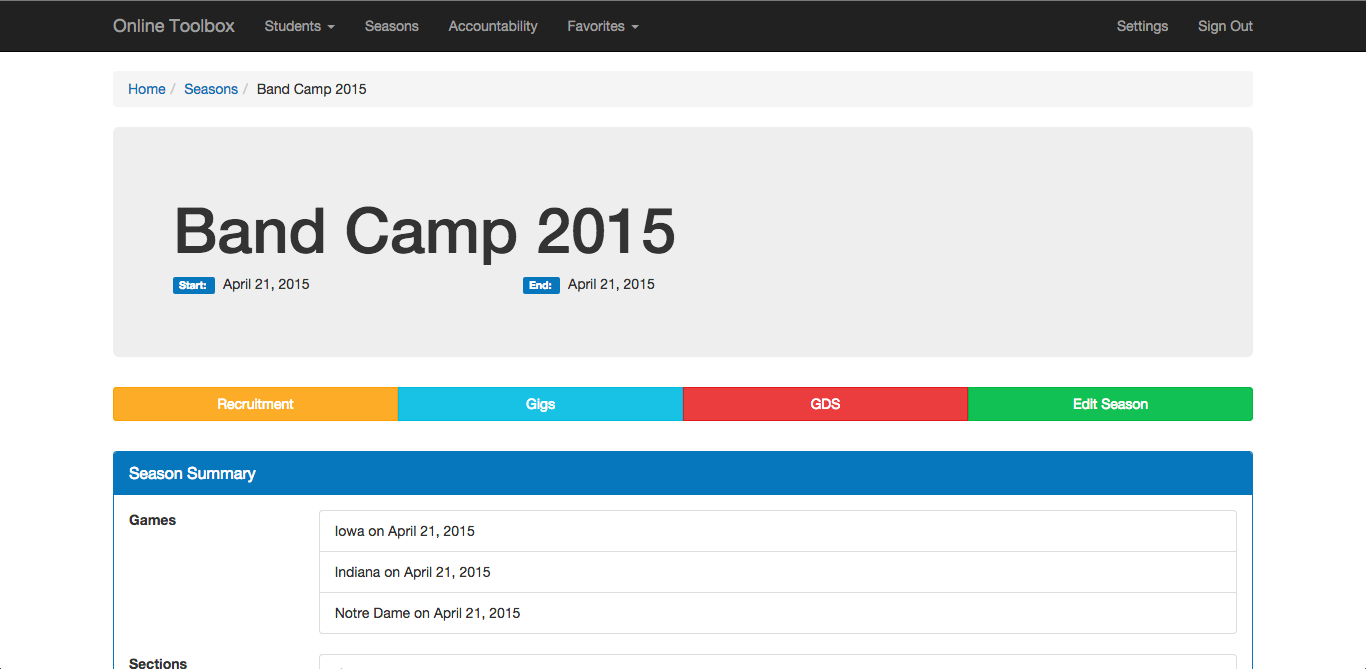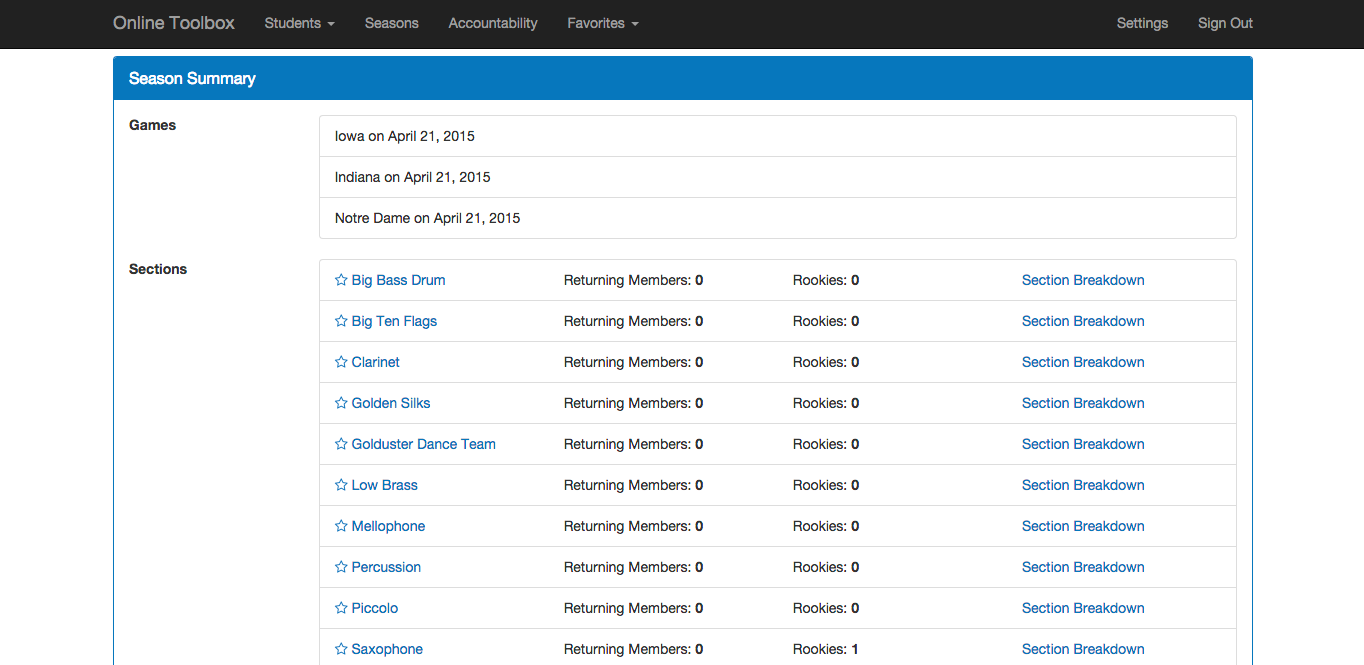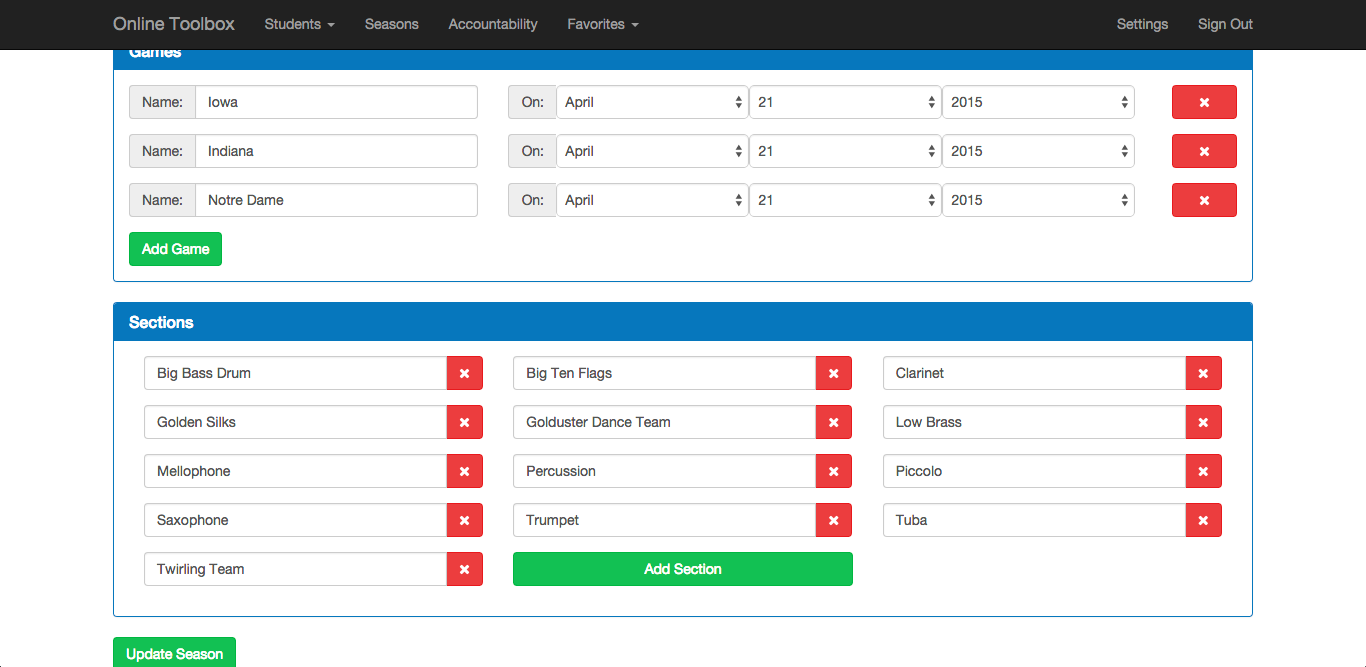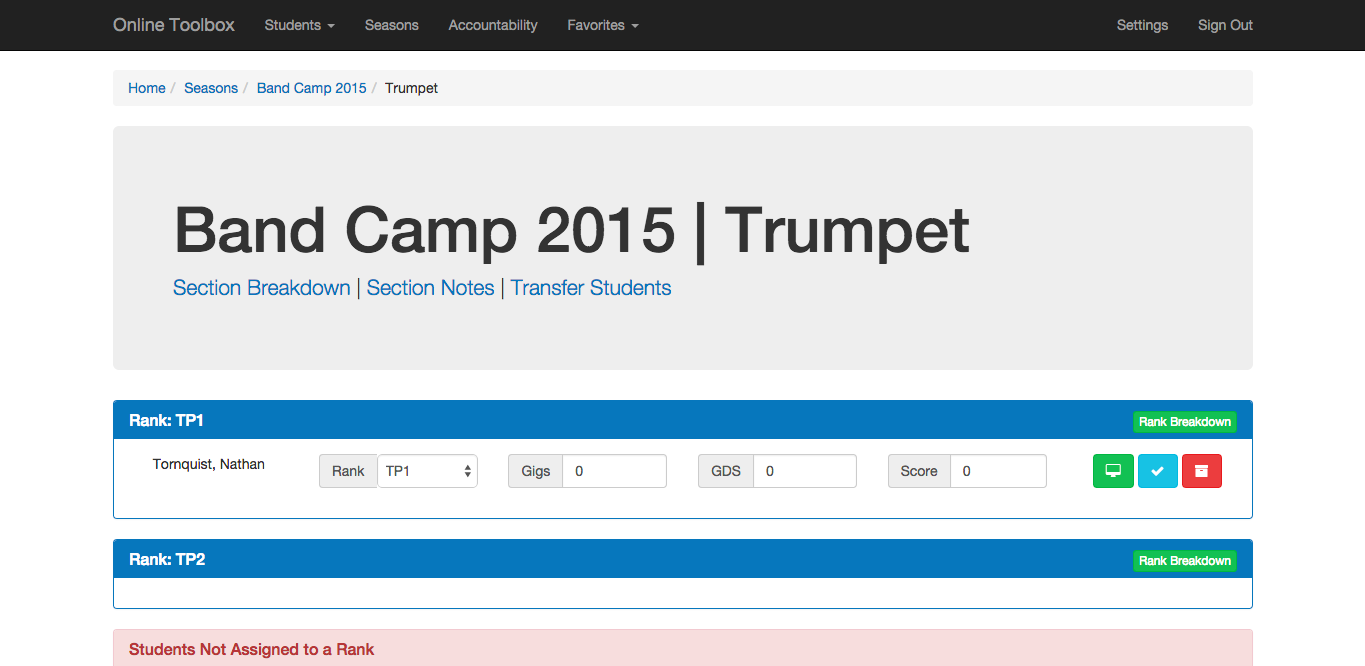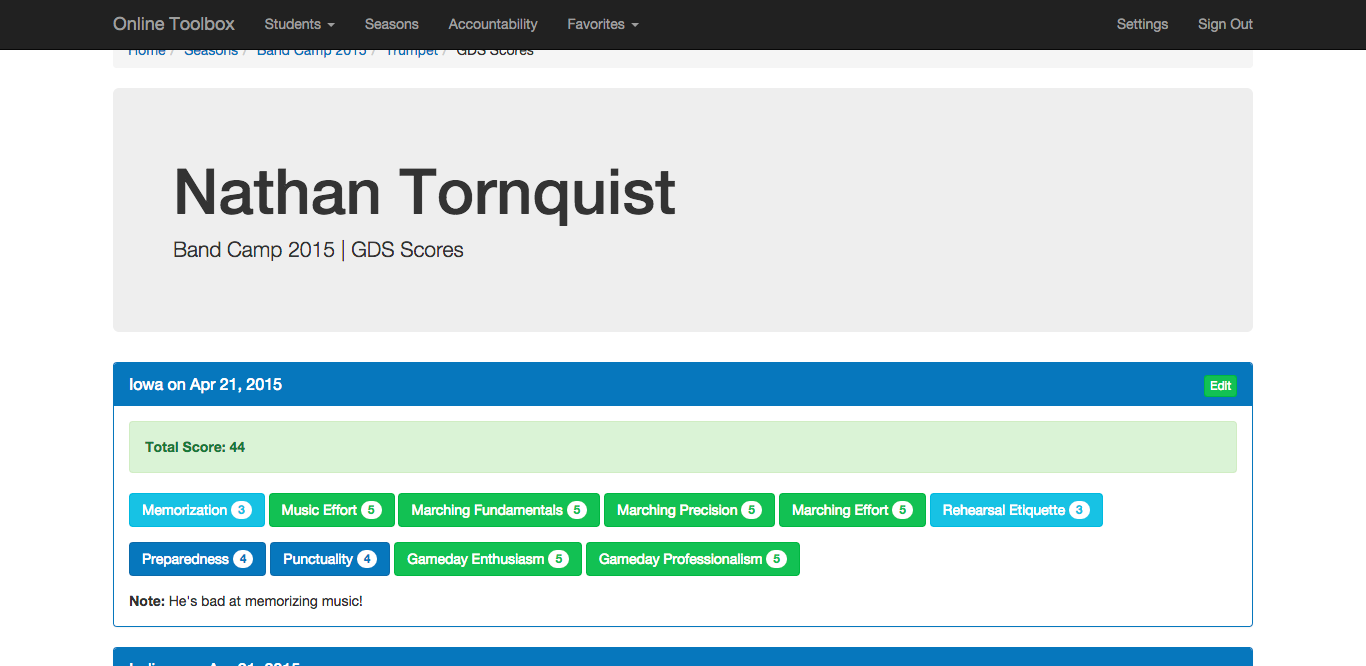One of the most important parts of marching band is recruiting. Without strong recruitment it can be hard to get the number of musicians needed to fill in the parade blocks or drill patterns on the field. During my time at Purdue I was very active in the marching band and as an upperclassman I was part of the leadership team.
All of the marching band recruiting and followup throughout the summer is done by the leadership team of each section. Individuals have a number of students to contact and followup on, and it is their responsibility to accurately report headcounts and have the followthrough to see those students arrive at band camp.
This type of tracking and the amount of information captured can be managed well using a CRM. Doug Booth was the trumpet section leader when I was a freshman, and he had built the original Online Toolbox marching band CRM. When he graduated, I took over maintenance of the original tool.
I had a pretty big list of features that I wanted to add, and eventually rewrote the site using Ruby on Rails.
My tool had import/export features, easy account management, and was designed to allow data on recruited students to continue right on into the season. Students could be organized into sections and ranks (groups of 11 within a section). In addition to organization features, there was the ability to track gigs (negative marks) and automatically identify which students would be Game Day Staff (non-marching support) for the next game.
I expanded the Doug’s tool from a recruiting platform to a full marching-band management platform. Staff, leadership and external recruitment all had features and tools built into this product.
On top of that organization, everything was fully relational and flexible. I wanted all the fields to be customizable and wanted to create a product that would not need me (or anyone else) to maintain it. During the first season it was used, the trumpet section alone had ~20% more students in camp than the historical average.
I’ve written a bit more about the story in a blog post and have the source on GitHub.
